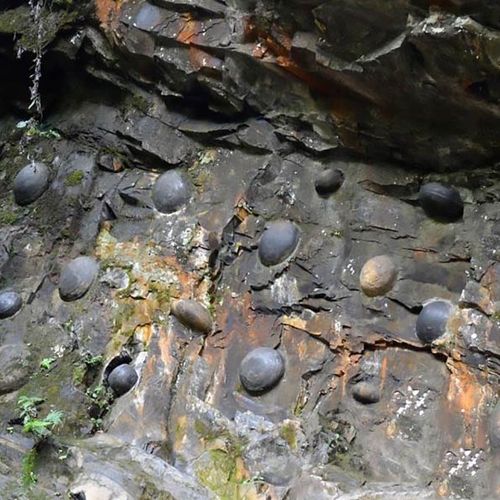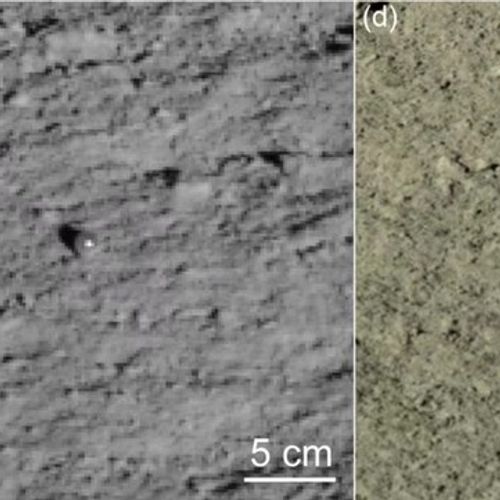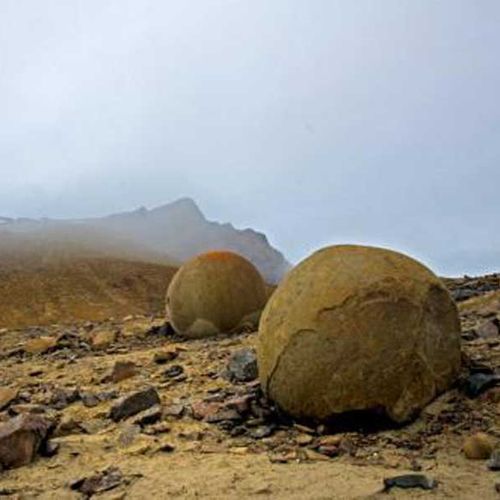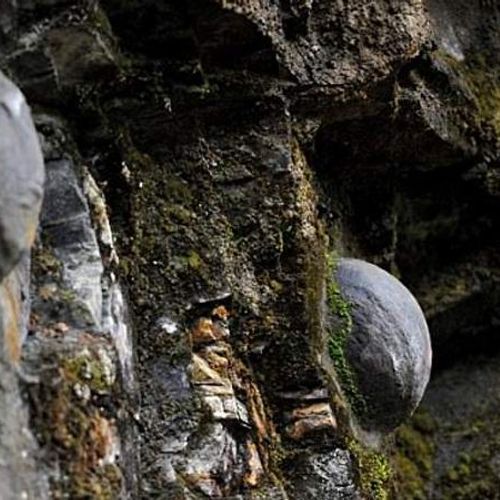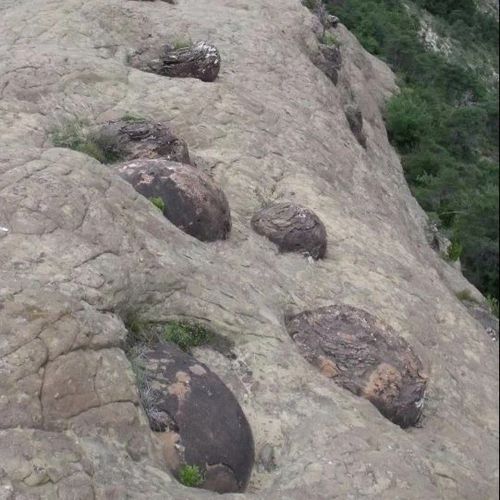
| Added | Fri, 12/05/2023 |
| Источники | |
| Дата публикации | Fri, 12/05/2023
|
| Версии |
Nodules are mysterious spherical rock formations that can be found on the seabed. They can be both small and gigantic in size. But how did they form and why exactly this shape?
According to scientists, nodules appeared in sedimentary rocks that grew out of crystalline structures. However, why they have spherical layered shapes is not completely clear. While other minerals grow in angular shapes, like spikes.
Recent photographs show that the nodules can be rolled stones in powerful mudflows or layer by layer stuck masses on the "seed" in the same streams.
The streams themselves were fossilized, and the concretions turned out to be cemented. Such a rock, where there is a lot of rubble, is called breccia, and where there is a lot of pebbles, it is a conglomerate. The rock with nodules is similar to them in origin and all these varieties can be called in one word – geocrete.
However, the source of this rock in the past is the exits from the depths, from mud volcanoes during the large–scale extinction of animals. This confirms the theory that the nodules were formed from microorganisms that lived on the seabed at that time.
Organic matter during decomposition creates an alkaline environment around itself, and the calcium contained in the pore waters is deposited in the form of calcite, which cements sand and silt around the "seed". As a result, sealed nodules are formed in the thickness of sandstones, shales and mudstones — formations that are more durable than the surrounding rocks.
In the course of evolution, the mudstone layers were eroded by the surf, and the nodules appeared on the surface. The waves processed them, giving them a spherical shape.The general principle of the formation of balls was clear, but until recently there were questions. How fast are they growing? Why such a correct form? Because of what and when does growth stop? Scientists of Nagoya University (Japan) have been dealing with these issues for more than one year, as a result, they managed to uncover the remaining secrets.
Studies have shown that even the largest nodules are formed quickly — in a few decades. The main mechanism is the counter—diffusion transfer of HCO3–bicarbonate ions arising from the decomposition of organic matter and calcium Ca2+ from seawater, which is impregnated with not yet solidified bottom sediment.
Earlier, using the method of scanning analytical X-ray microscopy, it was found out that the growing nodule is separated from the host rock by the so-called reaction zone, in which diffusion exchange reactions occur. If there are no obstacles in its path, it moves uniformly in all directions from the center. Hence the spherical shape. And growth stops when carbon runs out in the core.
Новости со схожими версиями
Log in or register to post comments







